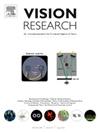cnn提取的特征生成对未见图像的合成fMRI响应
IF 1.4
4区 心理学
Q4 NEUROSCIENCES
引用次数: 0
摘要
受生物视觉的启发,卷积神经网络(cnn)已经解决了曾经被认为是人类专业知识的唯一领域的具有挑战性的图像识别问题。反过来,cnn现在被广泛用作研究人类视觉的框架。利用人类功能磁共振成像(fMRI)数据的研究表明,cnn层与皮层区域沿视觉通路之间的组织相似性,即cnn的第一层能更好地预测早期视觉区域的活动,而cnn的最后一层能更好地预测高级视觉区域的反应。然而,对于CNN特征如何很好地预测fMRI反应,特别是在fMRI噪声存在的情况下,缺乏一致意见,这可能导致大脑对相同图像的重复反应不同。此外,这些对以前未见过的图像的预测反应作为合成fMRI数据的效用尚未被探索。在这里,我们使用BOLD5000数据集和AlexNet架构,并使用在ImageNet上预训练的模型权重初始化,以证明cnn提取的特征可以对图像产生高精度的合成fMRI响应。我们证明,合成fMRI响应与真实响应本身相比,与真实响应的重复表现出更高的相关性,超过了存在噪声的真实数据的质量。此外,我们用合成的fMRI数据训练了一个解码器,用于对真实的fMRI数据进行未见图像甚至未见对象类别的分类。我们的解码实验表明,合成数据优于真实数据,特别是由于能够生成更大的合成数据集。我们的研究结果展示了基于CNN特征的图像生成的高质量合成fMRI响应,显示出与真实数据的相似性和在经验应用中的实用性。本文章由计算机程序翻译,如有差异,请以英文原文为准。
CNN-extracted features generate synthetic fMRI responses to unseen images
Inspired by biological vision, convolutional neural networks (CNNs) have tackled challenging image recognition problems once considered the sole purview of human expertise. In turn, CNNs are now widely used as a framework for studying human vision. The organizational similarity between the layers of CNNs and cortical regions along the visual pathway has been shown in studies using human fMRI data, such that early visual areas’ activities are better predicted by the first layers of CNNs while their last layers better predict the response of higher-level visual areas. However, there is a lack of agreement on how well CNN features can predict fMRI responses, particularly in the presence of fMRI noise, which can result in varying brain responses to the repetitions of the same image. Additionally, the utility of these predicted responses to previously unseen images as synthetic fMRI data has not yet been explored. Here we use the BOLD5000 dataset and the AlexNet architecture initialized with the model weights pre-trained on ImageNet to show that features extracted by CNNs can g enerate highly accurate synthetic fMRI responses to images. We demonstrate that synthetic fMRI responses show higher correlations with repetitions of real responses than the real responses themselves, surpassing the quality of real data in the presence of noise. Moreover, we train a decoder with synthetic fMRI data to classify real fMRI data for unseen images and even unseen object categories. Our decoding experiments revealed that the synthetic data outperformed real data, particularly due to the ability to generate larger synthetic datasets. Our findings showcase the high quality of generated synthetic fMRI responses to images based on CNN features, exhibiting both similarities to real data and practical utility in empirical applications.
求助全文
通过发布文献求助,成功后即可免费获取论文全文。
去求助
来源期刊

Vision Research
医学-神经科学
CiteScore
3.70
自引率
16.70%
发文量
111
审稿时长
66 days
期刊介绍:
Vision Research is a journal devoted to the functional aspects of human, vertebrate and invertebrate vision and publishes experimental and observational studies, reviews, and theoretical and computational analyses. Vision Research also publishes clinical studies relevant to normal visual function and basic research relevant to visual dysfunction or its clinical investigation. Functional aspects of vision is interpreted broadly, ranging from molecular and cellular function to perception and behavior. Detailed descriptions are encouraged but enough introductory background should be included for non-specialists. Theoretical and computational papers should give a sense of order to the facts or point to new verifiable observations. Papers dealing with questions in the history of vision science should stress the development of ideas in the field.
 求助内容:
求助内容: 应助结果提醒方式:
应助结果提醒方式:


